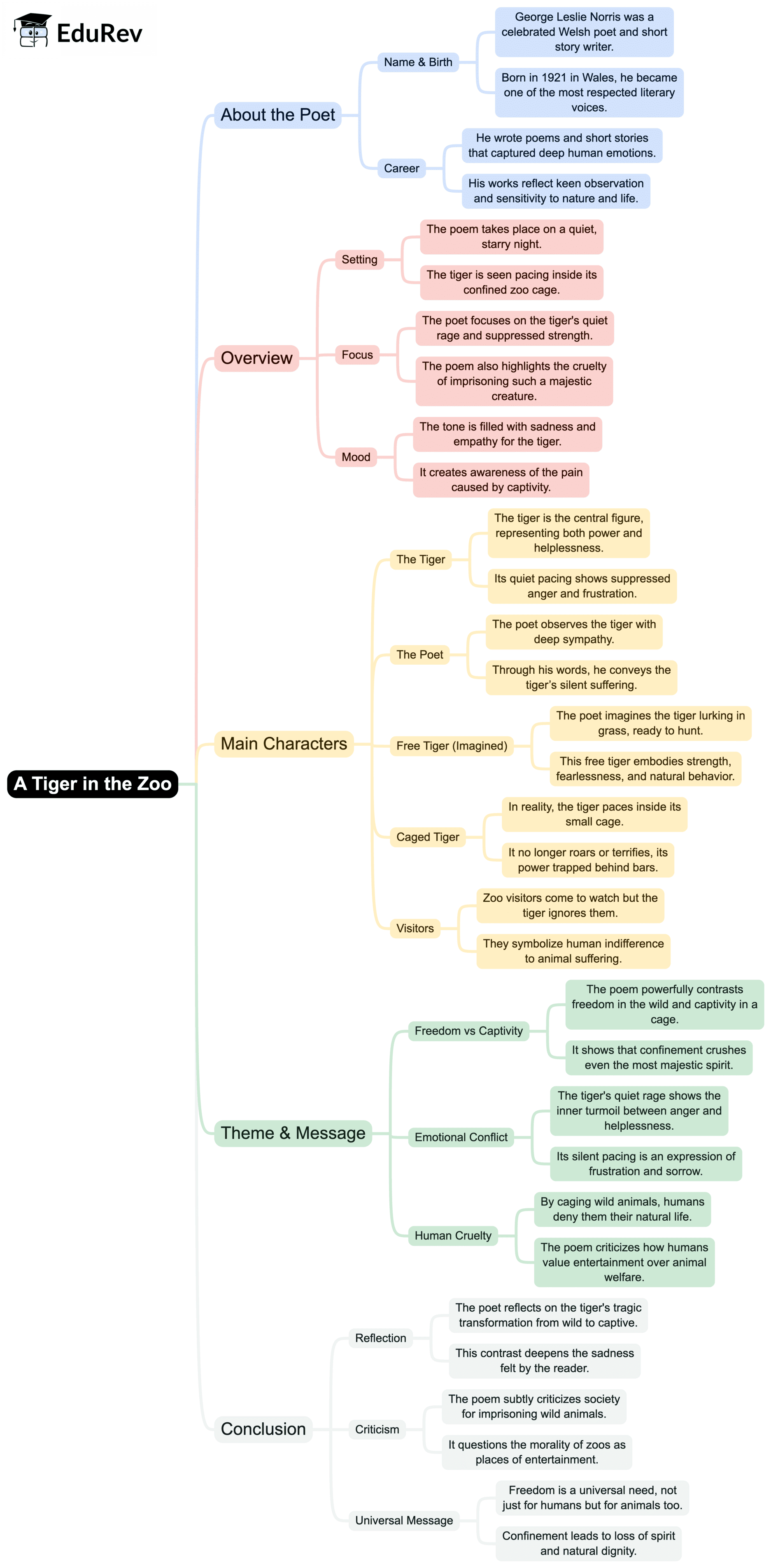Class 10 Exam > Class 10 Notes > English Class 10 > Mind Map: A Tiger in the Zoo
Mind Map: A Tiger in the Zoo | English Class 10 PDF Download

The document Mind Map: A Tiger in the Zoo | English Class 10 is a part of the Class 10 Course English Class 10.
All you need of Class 10 at this link: Class 10
|
61 videos|617 docs|69 tests
|
FAQs on Mind Map: A Tiger in the Zoo - English Class 10
| 1. What is the main theme of "A Tiger in the Zoo"? |  |
Ans. The main theme of "A Tiger in the Zoo" revolves around the contrast between the tiger's natural habitat and its life in captivity. It highlights the loss of freedom and the impact of confinement on the tiger's spirit, symbolizing the broader issues of nature versus nurture and the loss of wildness in animals kept in zoos.
| 2. How does the poet depict the tiger in a zoo compared to its natural habitat? |  |
Ans. The poet depicts the tiger in the zoo as a creature that is subdued and restrained, contrasting with its wild and majestic nature in the jungle. In the zoo, the tiger is described as pacing back and forth, which illustrates its frustration and the loss of its natural instincts. This creates a stark difference between its powerful presence in the wild and its powerless state in captivity.
| 3. What literary devices are used in "A Tiger in the Zoo"? |  |
Ans. The poem employs various literary devices such as imagery, personification, and symbolism. Imagery is used to create vivid pictures of the tiger's movements and surroundings. Personification gives the tiger human-like qualities, emphasizing its feelings of sadness and confinement. Symbolism is evident as the tiger represents the larger theme of freedom versus captivity.
| 4. What emotions does the tiger express in the poem? |  |
Ans. In the poem, the tiger expresses emotions of frustration, sadness, and longing. Its pacing in the cage signifies its restlessness and desire for freedom. The tiger's situation evokes feelings of empathy in the reader, highlighting the pain of being trapped and the loss of its natural instincts and hunting abilities.
| 5. Why is the tiger's captivity significant in understanding the poem's message? |  |
Ans. The tiger's captivity is significant as it serves as a metaphor for the broader implications of human intervention in nature. It emphasizes the consequences of taking animals out of their natural environments and the ethical concerns regarding zoos. The poem urges readers to reflect on the importance of preserving wildlife and the natural habitats that nurture their instincts and behaviors.
Related Searches

















